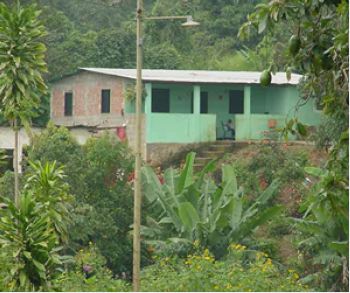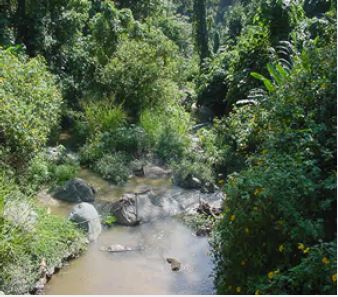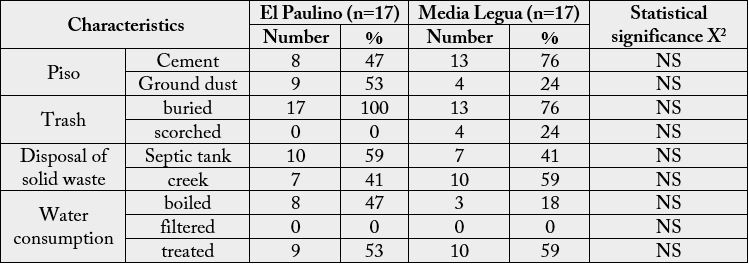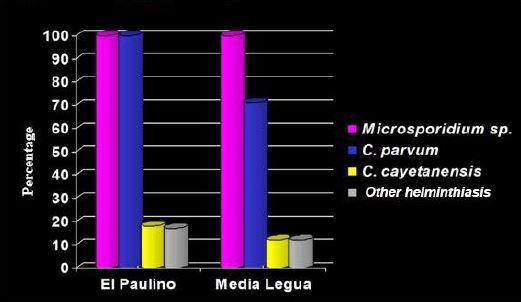Biography
Interests
Marcel Marcano-Lozada1,2*, Silvia Molero3 & Eduardo García4
1Department of Microbiology, J. M. Vargas School of Medicine, Central University of Venezuela, Caracas Venezuela
2Medical Microbiology Specialist, Medical Microbiology Unit, Angios Vascular Center & Wound Clinic, Caracas,
Venezuela
3Internal Medicine Specialist, Angios Vascular Center & Integral Wound Care, Caracas, Venezuela
4Pneumonologist, Atias Clinic, Caracas, Venezuela
*Correspondence to: Dr. Marcel Marcano Lozada, Department of Microbiology, J. M. Vargas School of Medicine, Central University of Venezuela, Caracas Venezuela.
Copyright © 2019 Dr. Marcel Marcano Lozada, et al. This is an open access article distributed under the Creative Commons Attribution License, which permits unrestricted use, distribution, and reproduction in any medium, provided the original work is properly cited.
Abstract
To study the incidence of intestinal microsporidia and coccidia in asymptomatic gastrointestinal
children under 12 years old, from two rural communities of the Vargas State, Venezuela.
Collection of samples in the communities of El Paulino and Media Legua, Carayaca parish,
Vargas State, Venezuela, between May and July 2001. We studied 34 children, under 12 years
old, gastrointestinal asymptomatic, collecting 3 serials stool samples per child in Raily-Henry
conservation media, and filling a survey on clinical & sanitary conditions. Samples were processed
by: Kato-Katz method, extended colored with Kinyoun, lugol & trichrome stains.
17 children from each community represent 43% and 17% respectively of the total of children under
12 years old in each population nucleus. There were no statistically significant differences in the
health characteristics of both populations. 100% of the children were parasitized by Microsporidium
sp., Concomitantly 29 (85%) by Cryptosporidium parvum and 5(15%) by Cyclospora cayetanensis.
Geohelminths averaged approximately 15% overall prevalence.
The high prevalence of microsporidia and intestinal coccidia (transmission associated with
contaminated waters) reveals the poor socio-sanitary conditions of the evaluated population. The
low frequency of helminths found can be related to the cyclic deworming programs applied to
school children in these communities or even to a phenomenon of parasitic interference. The
absence of gastrointestinal manifestations can be explained by a poor immune response mediated
by a phenomenon of tolerance to the presence of the microorganism. This study reveals that acidresistant
parasites can be isolated in asymptomatic patients, where they will probably acquire
pathological significance in immunosuppressed states. That is why we set out to know the prevalence
of these emerging pathogens in a population under 12 years of age that haven’t diarrheal disease.
Immune tolerance due to chronic infection by coccidia & microsporidia in children under 12 years
old could be related to high acquisition rate (related to poor hygiene and lower social & economic
conditions) and explain the absence of gastrointestinal symptoms and diarrheal diseases.
Introduction
Intestinal parasitosis are one of the pathologies that occupy the first places of morbidity in the pediatric
consultation of the primary level of healthcare attention, and are a huge cause of school absenteeism and
grown alterations. In recent years, soil-transmitted helminth infections have been overcome by microsporidia
and intestinal coccidia, as the cause of diarrheic syndromes (especially in immunosuppressed patients). The
isolation of these agents (Microsporidium sp., Cryptosporidium sp., Cyclospora cayetanensis & Cistosisospora
belli -former Isospora belli-), from water sources represents one of the most probable ways in which these
microorganisms are found in human depositions; even without causing diarrheal pathology. Children are
one of the groups that can be affected in multiple ways by the presence of these parasites at the intestinal level, so knowing their incidence and prevalence in infants is important, since they can act as a reservoir and
become opportunistic pathogens and at the same time become a source of dissemination that mainly affects
patients with any kind of immunocompromise.
The pioneering work of Dr. Lucila Arcay and collaborators [1-3] already account for the possible zoonotic character of these enteropathogens, and the possibility that they can parasitize humans and animals -immunocompetent or not- and, their ubiquity in different ecological niches [4,5]. They give a preamble to the complexity of the interactions generated by these parasites [6].
Materials and Methods
Sample collection was carried out in two rural communities knows as “El Paulino” and “Media Legua”, belonging to the Carayaca parish of Vargas State, Venezuela (images 1 & 2), between the months of May and July 2001. 17 children from each community were studied, aged under 12 years and asymptomatic from the gastrointestinal point of view. Each child was collected 3 seriated stool samples in Raily-Henry transport and conservation media and a written survey was completed for each family to know the sanitary conditions, where special emphasis was placed on the factors associated with the presence of parasitosis, such as type of floor of the house, disposal of solid waste, management of sewage, water consumption.


The samples were processed by Kato-Katz method (a quantitative stool concentration method, where parasitic load can be determined: number of helminth eggs per gram of faeces), and colored extended with Kinyoun stain, lugol (direct examination) and trichrome; searching for helminth eggs and acid-resistant parasitic forms.
For the detection of emerging parasites, the samples were left uncovered at room temperature during processing, to allow the sporulation of the coccidia in contact with oxygen, taking care to avoid drying out said samples.
The computer software used to perform the statistical analysis were Microsoft Excel 2003®, Epi Info 2000® version 1.1.2 and GraphPad Software, InStat guide to choosing and interpreting statistical tests, 1998, GraphPad Software, Inc., San Diego California USA. The data obtained was presented in the form of tables and graphs.
Results
The health characteristics of the populations of El Paulino and Media Legua are presented in table No. 1

X2: Square-Chi NS: non-statistical significance (p>0,05)
The results of the study of the coprological samples are shown in the graph No. 1.

The other parasites that were found in this study were Blastocystis hominis in 24 and 47% of the children studied, Giardia lamblia and Entamoeba histolytica were only described in 6% of the children of El Paulino, where Ascaris lumbricoides was reported in 47% of the population studied; and Trichocephalus was only described in 12% of the children of Media Legua, contrasting with the absence of the three parasitosis described in El Paulino.
It is worth mentioning that 17 children from each community represent 43% and 17% respectively of the total of children under 12 years of age in each population nucleus, a representative sample of this group of age.
Discussion
The high prevalence of microsporidia and intestinal coccidia(transmitted mainly from contaminated waters)
reveals the poor socio-sanitary conditions of the evaluated population. The low frequency of helminths found
could be related to the cyclic deworming programs that are applied to school children in these communities,
this results contrast with the 2013 published findings of Rivero, et al [7], which a high incidence of acidresistant
parasites and protozoa, but with diarrheic symptoms.
The high incidence of microsporidiosis and coccidiosis in children is different than in younger adults and elderly according to the investigations of Chacon, et al [8], that reveals an important incidence of acidresistant parasites, not suspected in the initial diagnosis. In the same subject, in 2009, Devera, et al [9] identifies almost 11% of coccidia-associated diarrhea in children under 5 years old, an important number to consider these parasites as the causative agent for the diarrhea. In another research, Devera [10] find a relative high rate of intestinal coccidiosis in the preschool children evaluated in Bolivar State, Venezuela, with very few diarrheic symptoms, similar to our findings, but in our cases the incidence of microsporidia was huge (all the evaluated children), and coccidia were near 50% in this children.
We believed that the absence of gastrointestinal clinical manifestations may be due to poor immunological response to the presence of the microorganism (tolerance). Our study reveals that microsporidia and coccidia can be isolated in asymptomatic patients, where they will probably acquire pathological significance in severe immunosuppression such as infection by human immunodeficiency virus.
We recommend studies in children and adults and drinking water populations to clarify the role of colonization by coccidia in asymptomatic individuals and establish sanitary control mechanisms.
Conclusion
The immune tolerance phenomenon due to chronic infection by coccidia & microsporidia in children
under 12 years old could be related to high acquisition rate (bigger than the classic helminthiasis) since its
younger years (related to poor hygiene and lower social & economic conditions) and explain the absence of
gastrointestinal symptoms and diarrheal diseases.
Bibliography

Hi!
We're here to answer your questions!
Send us a message via Whatsapp, and we'll reply the moment we're available!